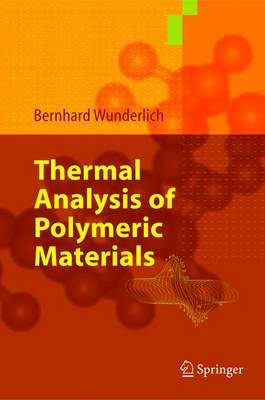Thermal analysis is an old technique. It has been neglected to some degree because developments of convenient methods of measurement have been slow and teaching of the understanding of the basics of thermal analysis is often wanting. Flexible, linear macromolecules, also not as accurately simply called polymers, make up the final, third, class of molecules which only was identified in 1920. Polymers have neverbeenfullyintegratedintothedisciplinesofscienceandengineering. Thisbook is designed to teach thermal analysis and the understanding of all materials, flexible macromolecules, as well as those of the small molecules and rigid macromolecules. The macroscopic tool of inquiry is thermal analysis, and the results are linked to microscopic molecular structure and motion. Measurements of heat and mass are the two roots of quantitative science. The macroscopic heat is connected to the microscopic atomic motion, while the macroscopic mass is linked to the microscopic atomic structure. The macroscopic unitsofmeasurementofheatandmassarethejouleandthegram,chosentobeeasily discernable by the human senses. The microscopic units of motion and structure are 12 10 the picosecond (10 seconds) and the ångstrom (10 meters), chosen to fit the atomic scales. One notes a factor of 10,000 between the two atomic units when expressed in “human” units, second and gram—with one gram being equal to one cubic centimeter when considering water. Perhaps this is the reason for the much better understanding and greater interest in the structure of materials, being closer to human experience when compared to molecular motion.
- ISBN13 9783540236290
- Publish Date 4 April 2005 (first published 1 January 2005)
- Publish Status Active
- Publish Country DE
- Publisher Springer-Verlag Berlin and Heidelberg GmbH & Co. KG
- Imprint Springer-Verlag Berlin and Heidelberg GmbH & Co. K
- Edition 2005 ed.
- Format Hardcover
- Pages 894
- Language English
